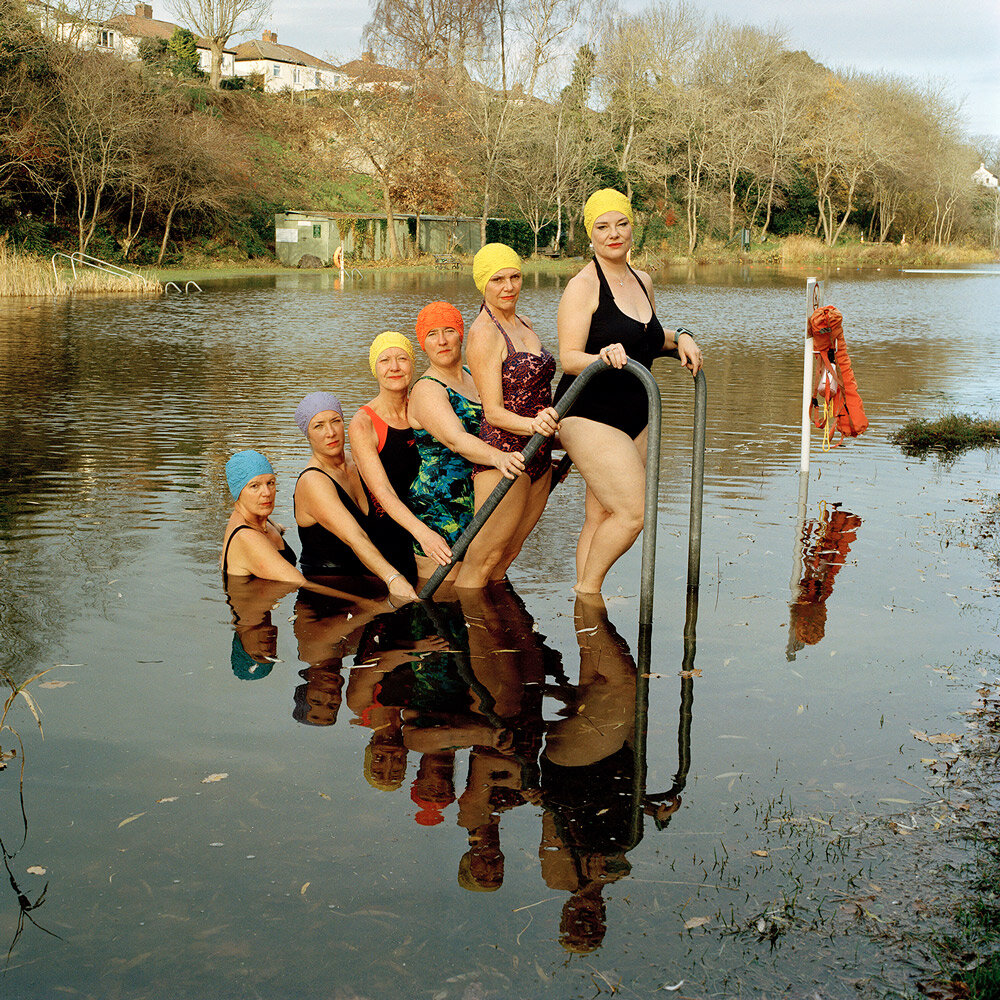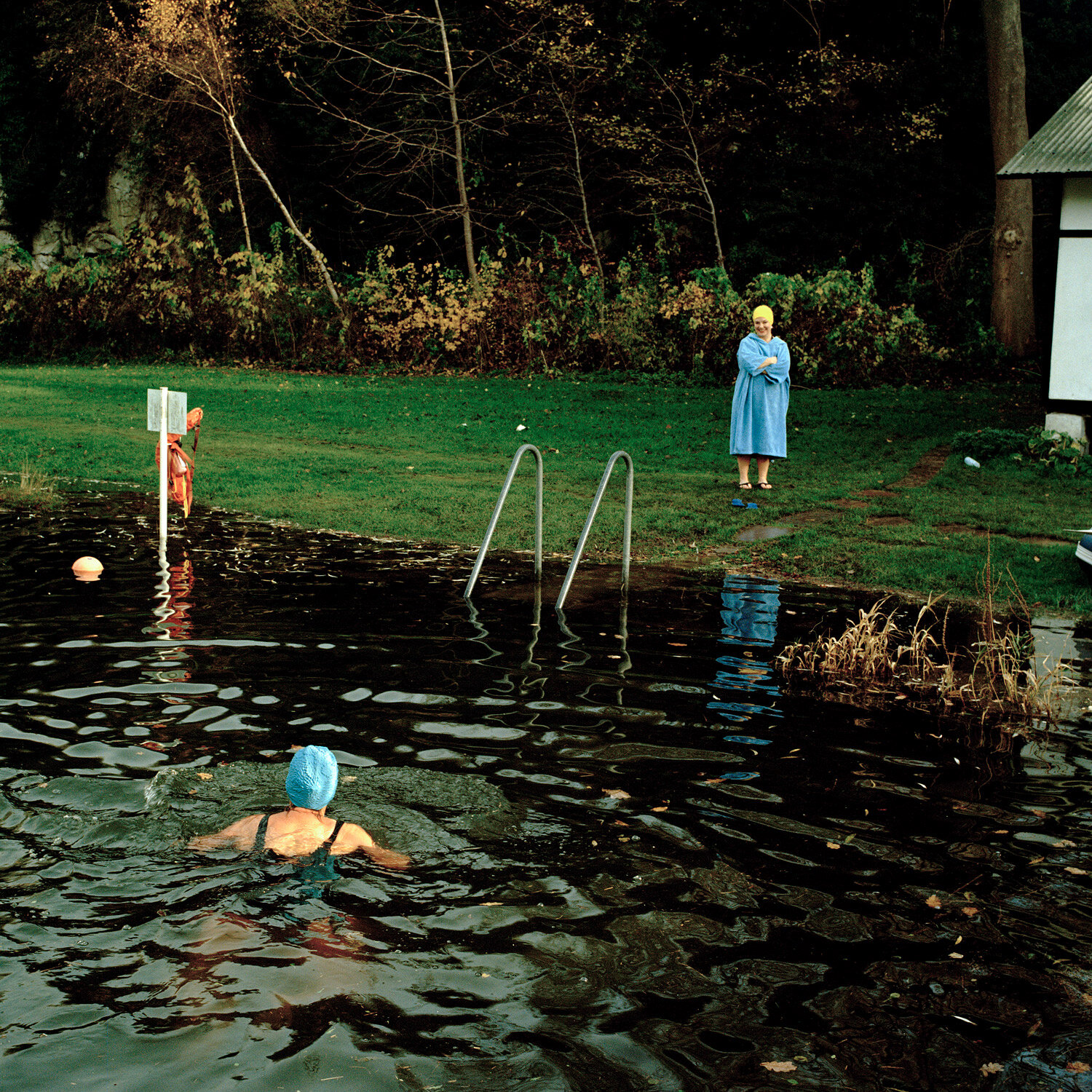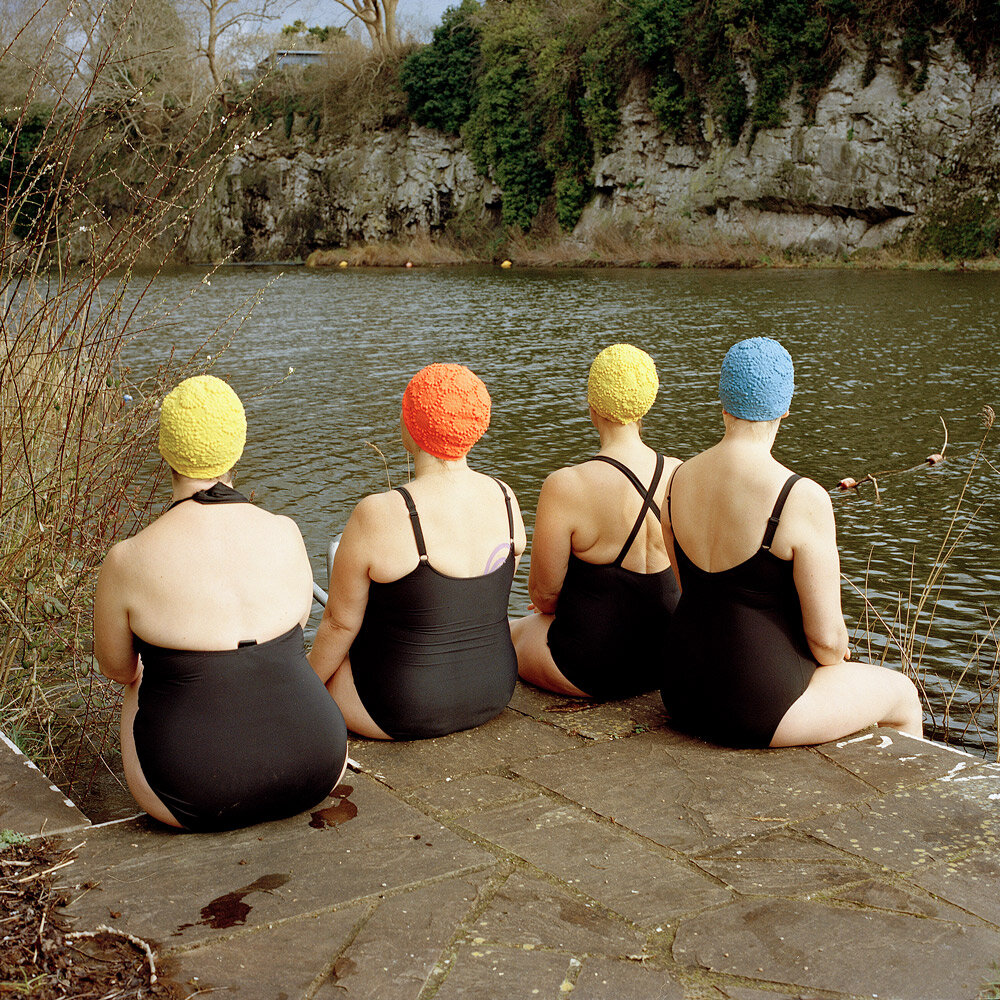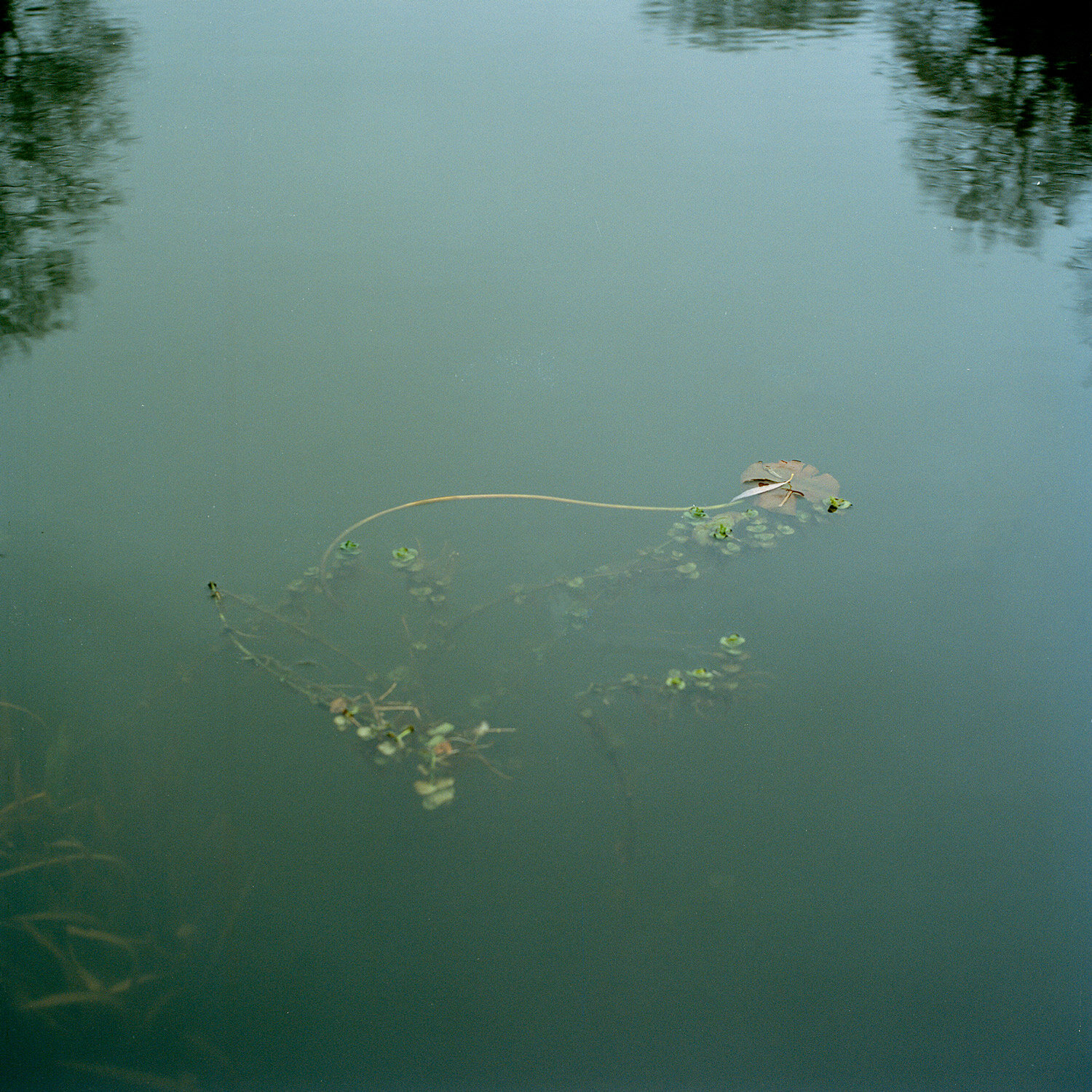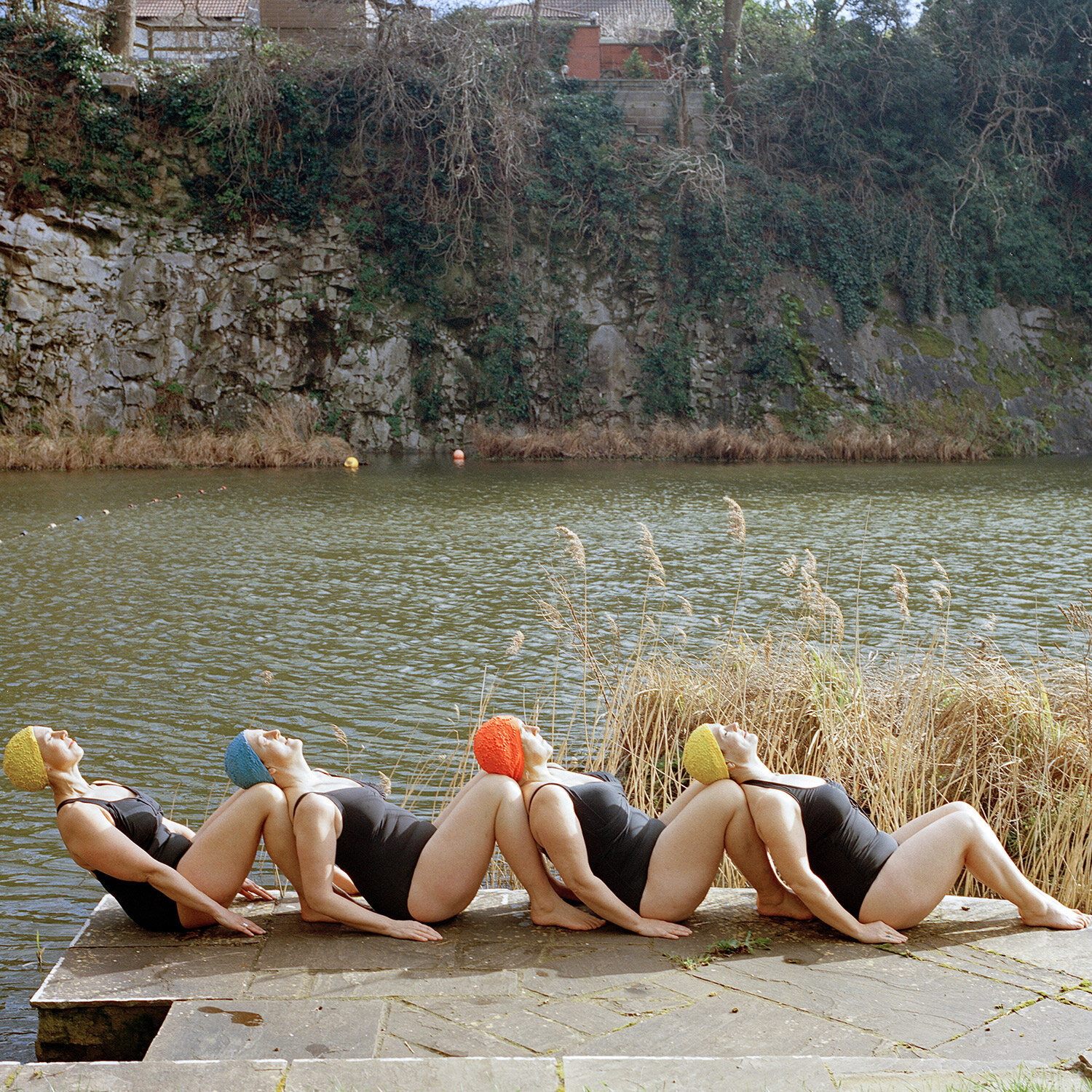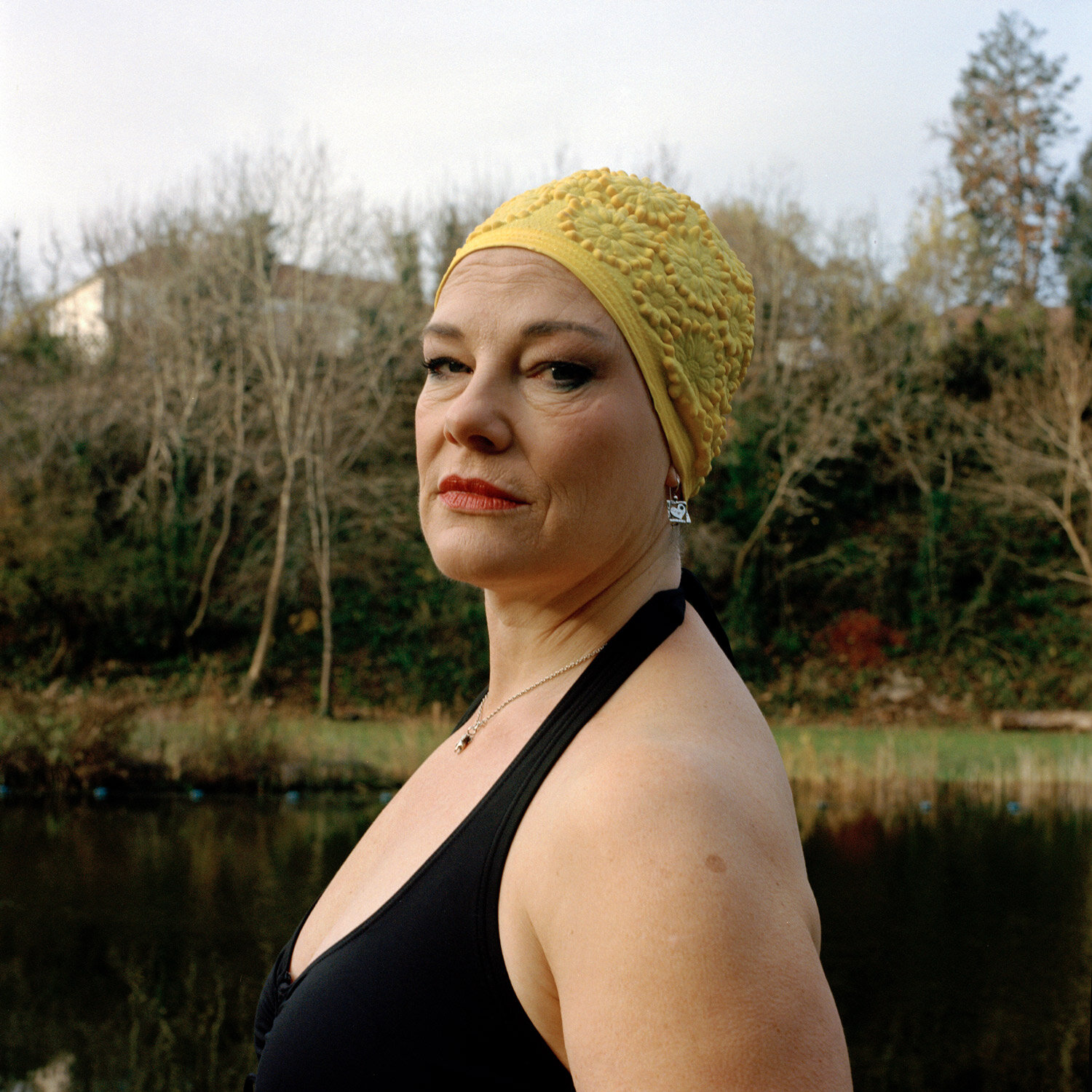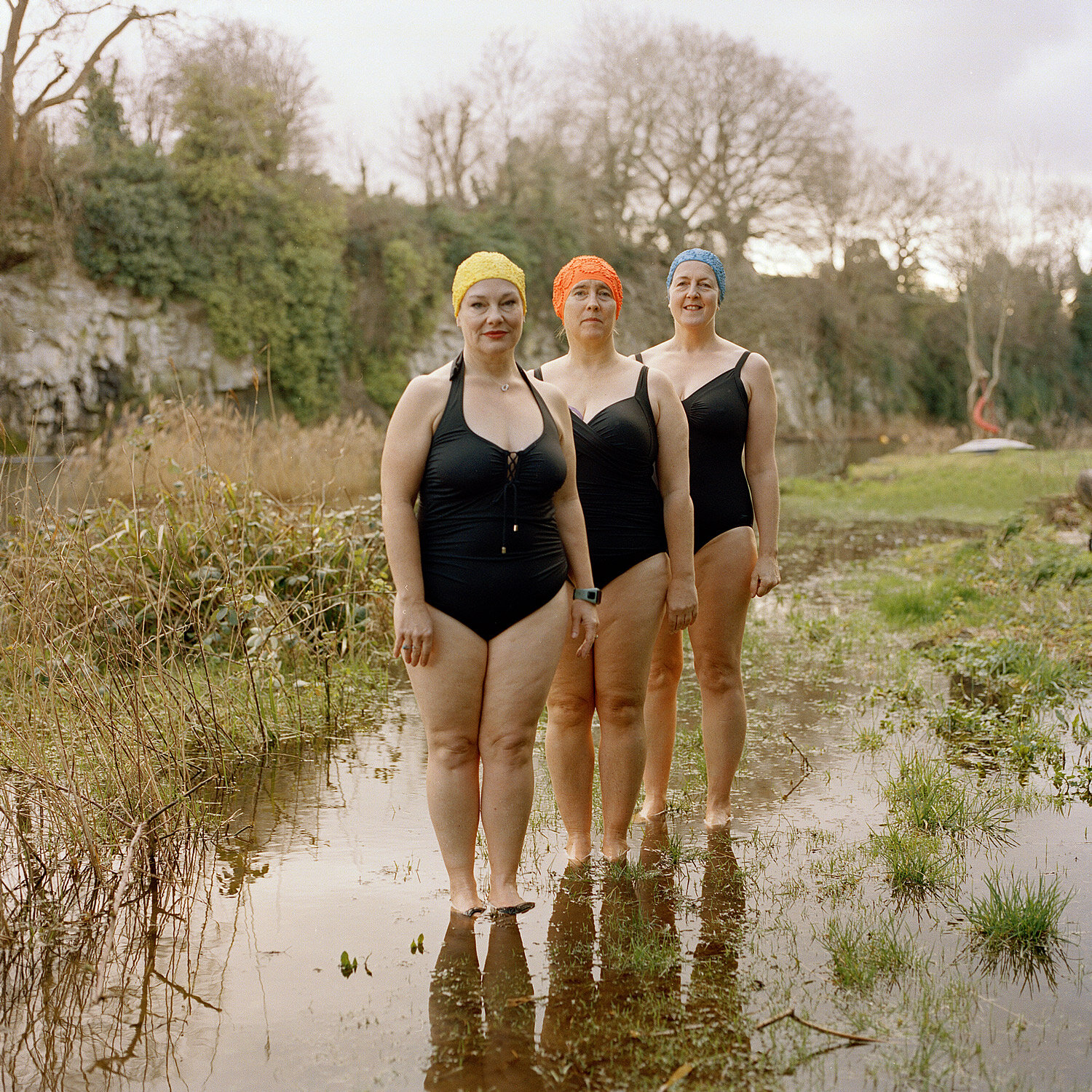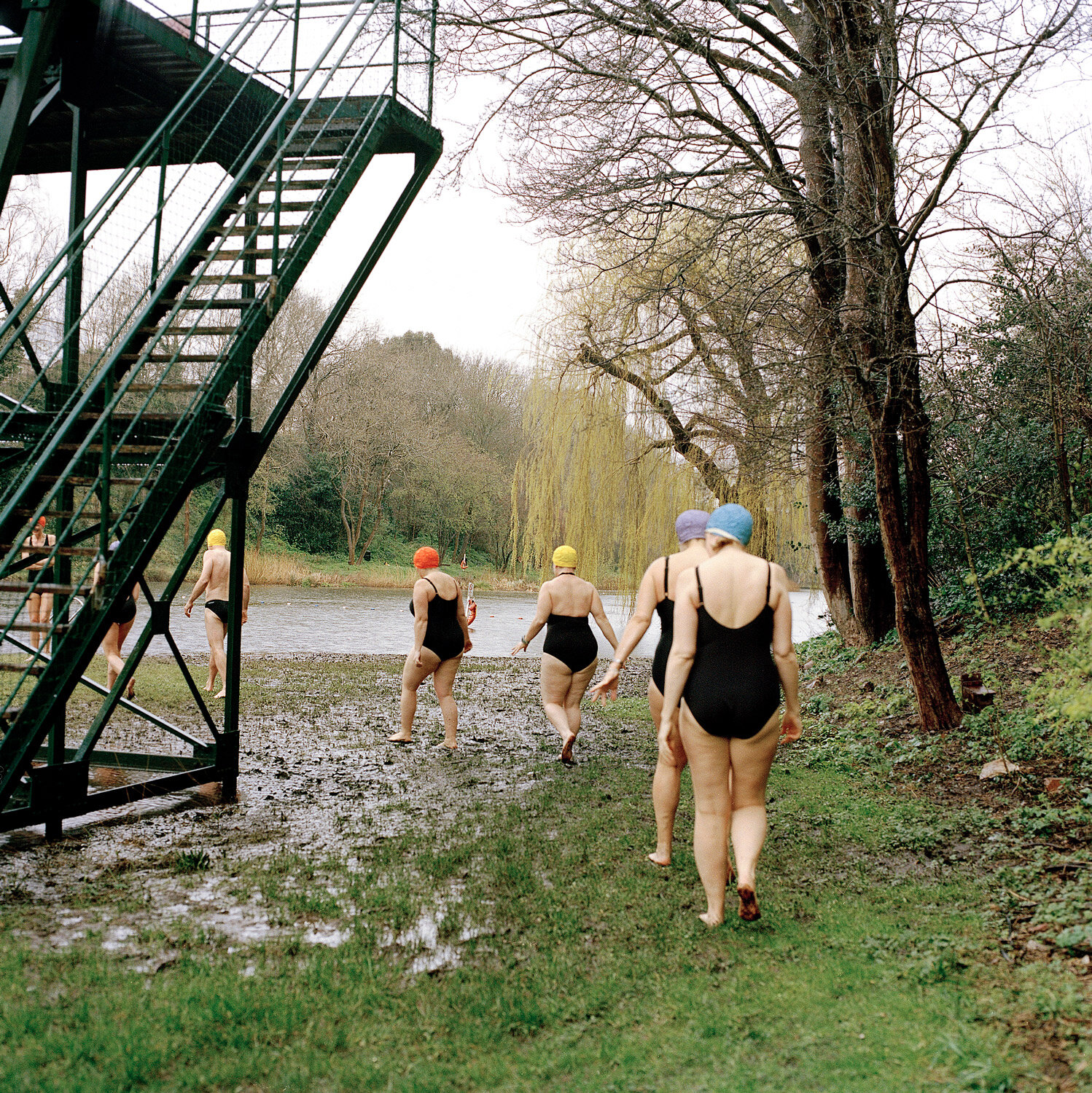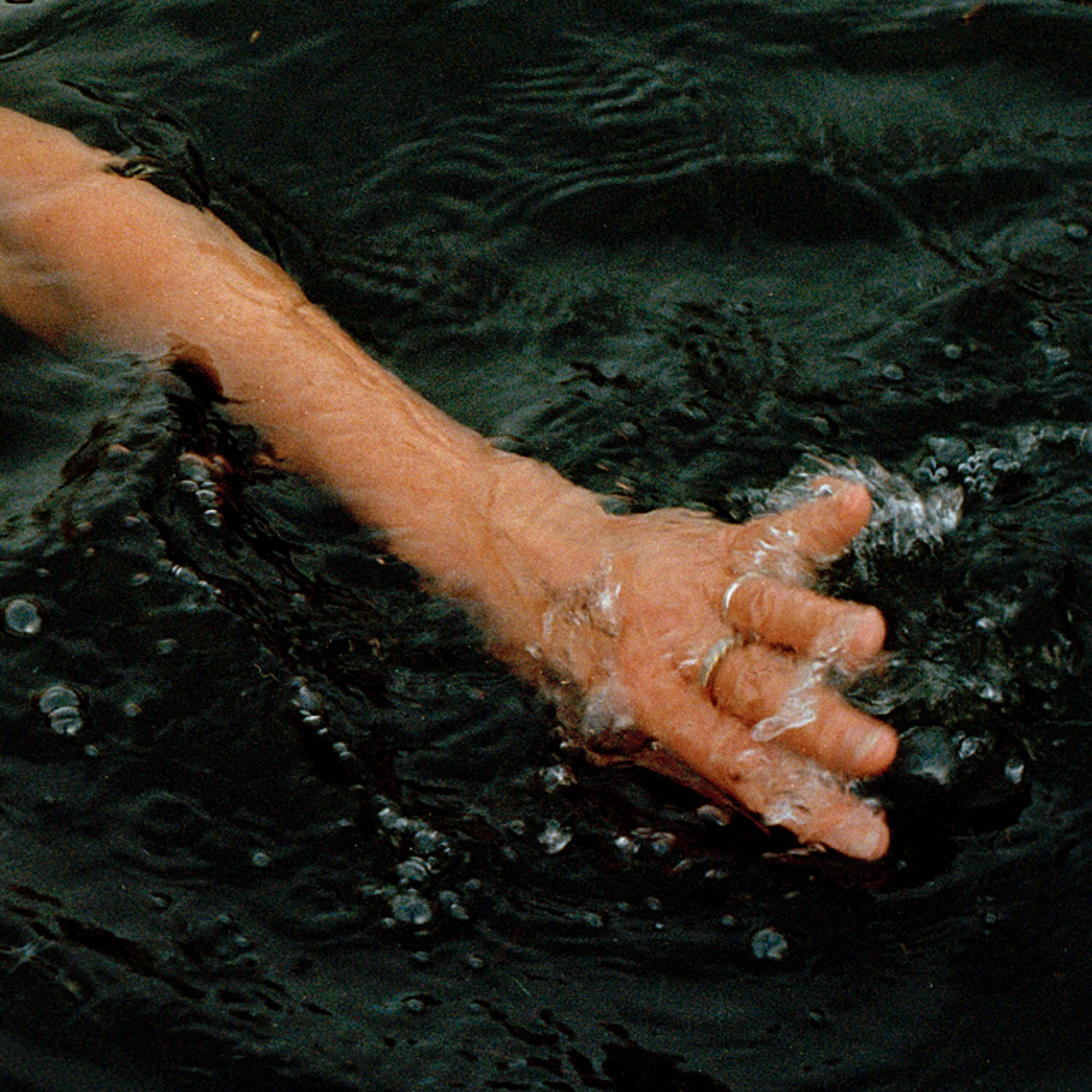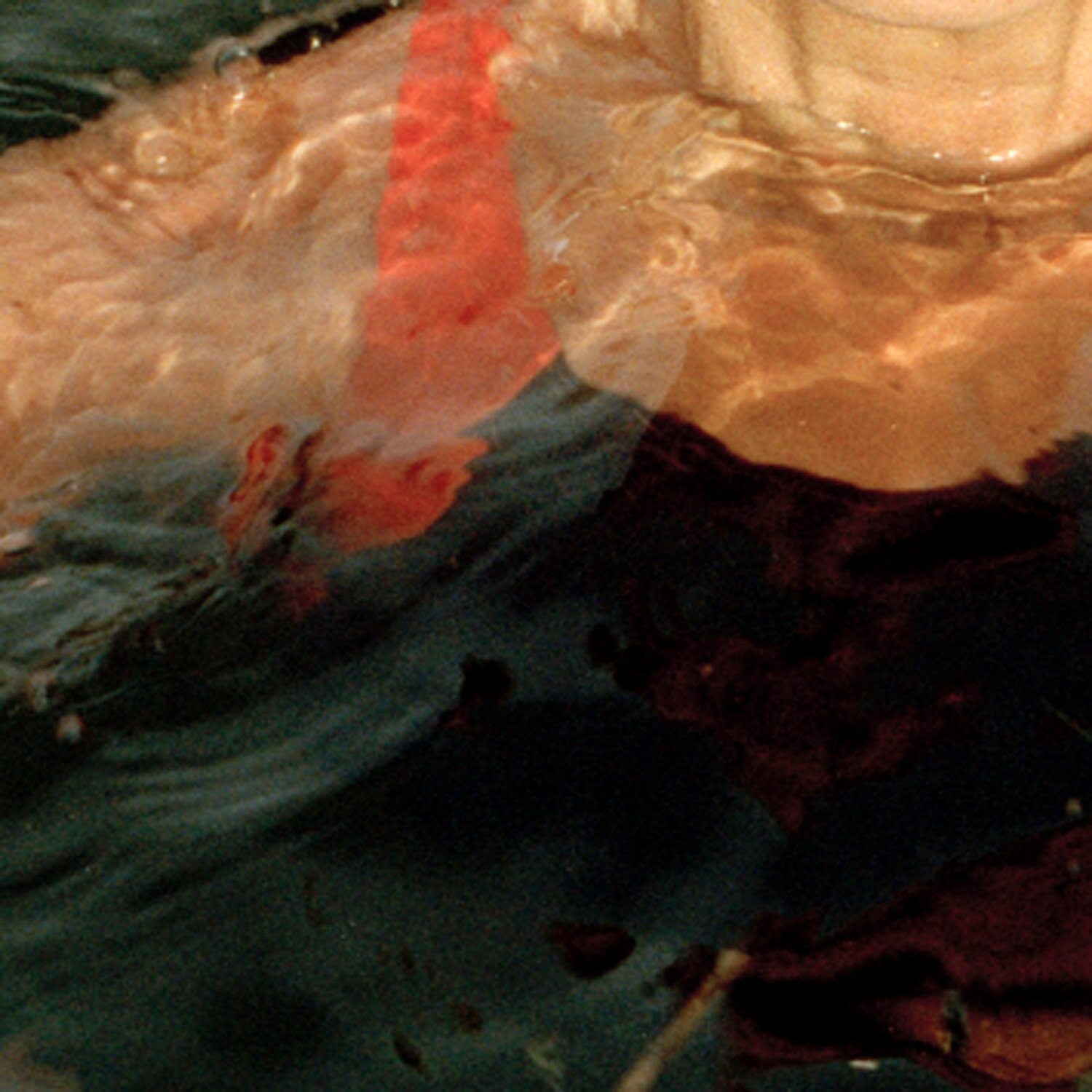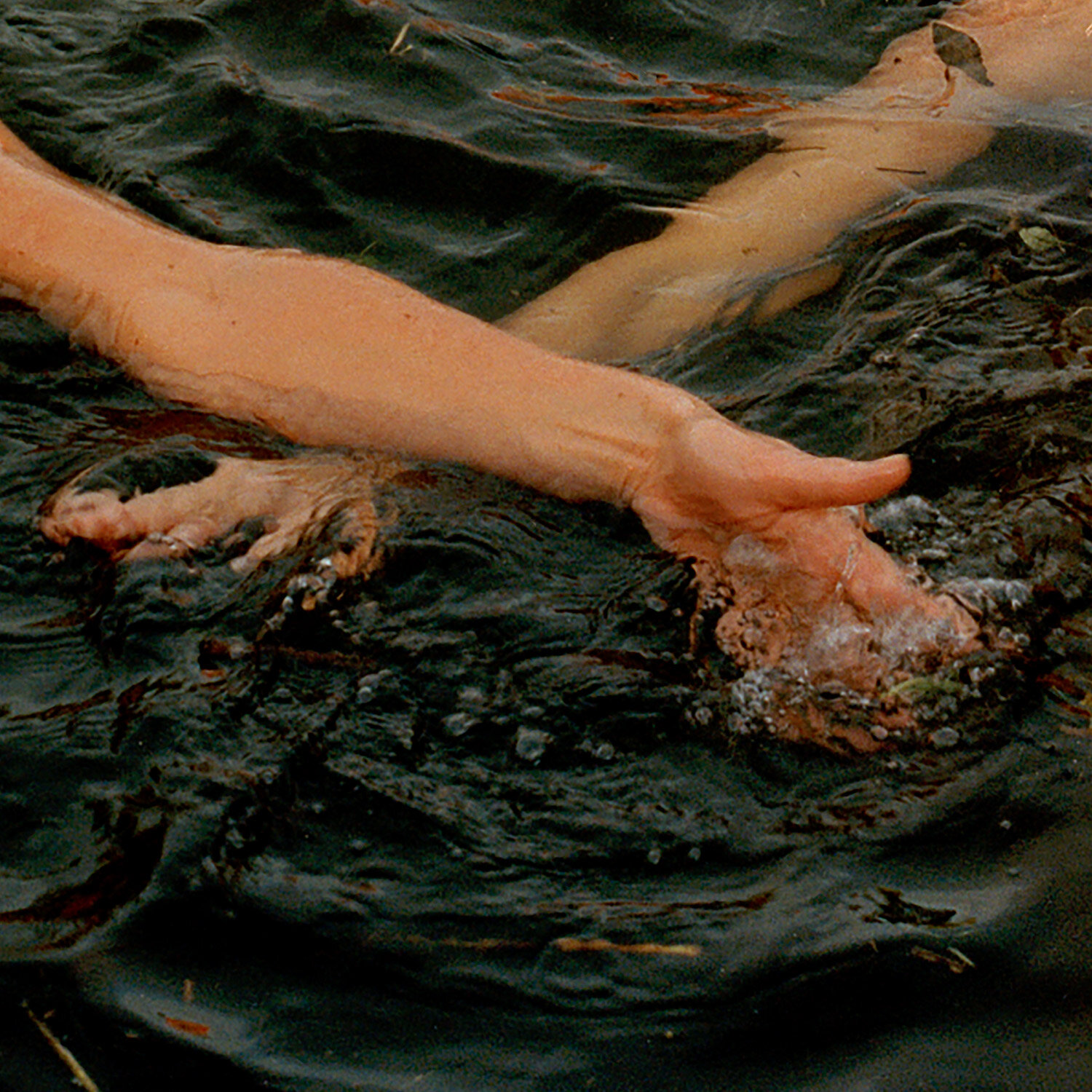Eva Watkins
In conversation with Eva Watkins about her on-going series currently titled ‘Synchronized Swimming’
RHOMBIE: Eva, how did your interest in photography begin?
EVA: I have been interested in photography for as long as I can remember really. When I was about five years old I remember just stealing my Dad’s camera out of the the study. I would run around taking photographs of everything, I just loved it. I can’t recall an exact moment where I had a realization of what photography meant to me, I believe my love of photography has just been there this whole time.
In Secondary School I began to study photography and was introduced to analogue. It was in University that my passion for it developed further. I discovered even more enjoyment in the process. I love the time it takes to develop film, analogue forces you to slow down. In the process of slowing down I began to develop a more personal approach to my work, which made it mean more to me. This was brought on by my tutors as well, they helped me come out of my shell. A lot of this has to do with group based projects as well, which is something I never expected myself to do. I use to be quite a nervous person. To some degree I still am, but no where near as much as I use to be.
RHOMBIE: Can you share more about the process of coming out of your shell. In what ways did your tutors help with this? In what ways did you use your camera as a tool for this process?
EVA: In my second year of university we were given a module. It required us to work with a group of people that you were interested in but didn’t know much about. This is how my series ‘Circus’ kicked off. I had to go and meet strangers. This process was initially daunting but it was the best thing i’ve ever done.
When I first met up with them we were chatting loads. Even though I am shy, having my camera there was all the sudden a layer of confidence that I hadn’t previously had. I realized I knew what I was doing. It allowed me to offer my skill to a new situation. This helped create a shared experience between myself and those I was photographing. Ultimately it gave me some control in an unfamiliar situation. By working with a Hasselblad, a camera that many people haven’t seen before, I was able to use it as an icebreaker. It was something I could talk about. It helped me ask them questions about what they do. It was something I could share.
I realized the module was a big deal for me because it forced me to do something I would have avoided. It influenced me to photograph more groups of people. It helped me build and strengthen the relationships within my work. This is how Synchro began.
RHOMBIE: When I am drawn to a person or group of people I want to photograph I feel it stems from my desire to learn more about them. Yet the process of photographing them often shows me I was drawn to them because they embody feelings or ideals I want to acquire. When you choose your subject matter do you feel your selection stems from a desire to learn more about yourself through avenues of similarities with your subjects? What excites you most to start a new series?
EVA: With my projects I developed that connection between myself, the people, and the subject matter. With circus I was just generally interested in people who performed circus, then through conversations I discovered my connection with them.They expressed similar feelings that they have about being different and standing out. I’m from a really small village, having blue hair, I get stared at quite a lot. My conversations with those from ‘Circus’ helped me embrace what makes me stand out.
With the synchro swimmers they are doing something so different. They are working in a challenging environment. For me, swimming in a challenging environment is so much more rewarding. So I think I was initially interested in the synchronized swimmers because they were doing something different. As I learned more about them from conversations I realized how connected my personality and interests is to theirs.
RHOMBIE: In your Instagram takeover you mention how Liz introduced you to the Synchronized Swimmers. What role did she play in helping you begin your series? How did you introduce your project to the Synchronized Swimming team?
EVA: A lot of my ideas come from dreaming. I dreamt that I was on a synchro team and that was really what I wanted to do and pursue. I began researching and all of the sudden Liz posted a picture of her and the synchro team she is in. She also use to be a circus performer as well. I got in contact with her straight away. She told me more about the team and it sounded so interesting. Her description made me want to photograph them even more. They came together for the celebration of the 100th year anniversary of Henleaze Swimming Club. A lot of them were strangers but I found it amazing that they united as a team.
I contacted the leader of the club and explained the project I wanted to make. She gave me the email addresses of the team. I sent the team members an email further describing why I wanted to photograph them. This led to groups of 5-6 people being willing to participate for each shoot. It really depends on who was comfortable being photographed.
RHOMBIE: Have you shared the photographs you’ve made so far with them? If so, how has including them into your process helped expand your project?
EVA: Since lockdown i’ve been emailing them photographs so they can see the progress. Also as a way to influence people to join in. Sharing the editing process helps them see what we are up to. They were all excited to see the images, which was really nice.
RHOMBIE: How did you describe the project to them?
EVA: To be honest I just showed my interest in the group with emphasis on admiring how they have a unique approach to the sport. I also spoke about my own love for outdoor swimming. At the time I didn’t have the context for the project that I do now. I initially just wanted to take photos of them. Lockdown helped me further develop a deeper concept for the series. Not being able to swim made the conversations shift towards the mental health benefits of swimming. While this was unplanned its turned it into something more, its taken on another form.
RHOMBIE: By integrating the mental health benefits of swimming It sounds like your series is taking shape in a way that is changing how you’ll tell the story. How did these conversations around mental health come up naturally?
EVA: During lockdown, I’ve used this time to start reading about swimming and teamwork. Mental health and physical health benefits became a reoccurring theme, continually popping up in my research. As I thought about this I revisited the shots I had taken. I began to think about the feeling of water. From the photographs I didn’t use I cropped in to them to see if I could create something new. I wanted to portray actually being able to touch water. For myself from about 16 to now, swimming has helped with my physical health since I have bad joints. This form of exercise naturally helps with my mental health as well. It was meant to be, the swimmers talked about it, it resonated with me, and then the research just felt like it needed to happen.
RHOMBIE: When you are able to shoot again how do you plan to incorporate this research into the images ?
EVA: The plan is to swim with them, form more of a bond with them, and hopefully this helps everyone come out of their shell. I want them to trust me and I plan to share more about my own experiences with swimming. I think these conversations will influence the future photographs.
RHOMBIE: You had mentioned that you are relatively shy and your camera helped you gain access that you may not have felt comfortable trying to gain without your camera in hand. How do you feel that this quality of being shy actually empowers you? Yes, the camera allows you to take the pictures but I really think because you are shy it helps you get images that not every photographer could make. You understand discomfort and being aware of this probably helps you create a situation where your subject feels comfortable working with you. Have you thought about how it actually might be a super power in the way you approach shooting?
EVA: I think it does benefit me in some ways. When you shared with me that you too, often feel shy and nervous, I felt so much more comfortable with this interview. I think most people become naturally nervous when in front of a camera, but because I too am aware of how it feel to be nervous, I now have a shared experience with them and this can help me navigate how to help them feel comfortable being photographed.
With the synchro team I met with them first without the camera to talk to them about the project and get to know them. Once I introduced my camera I kept checking to see if anyone was showing any sort of discomfort or awkwardness. If they were I took time to reassure them and discuss what feels right for them. I never want to take a photograph that someones not happy with or uncomfortable with.
I am very conscientious and very aware of another’s feelings. So yeah, I think my own experience of shyness helps me ease people. I suppose in a way it could be seen as a benefit for me. I wouldn’t change it.
RHOMBIE: Based on your own relationship to swimming is this series a self portrait?
EVA: I think it is and it isn’t. I wanted to show the different personalities of the swimmers and what they get out of it, as well as the bonding and relationships between them, with themselves and with the environment. Even though you set out to make a project about other people, you will always find yourself embedded in to it.
To keep up to date with Eva’s latest work follow along here:
Website: https://www.evawatkins.co.uk/
Instagram: https://www.instagram.com/evawatkinsphoto/

